The Japan Times Digital Archives
Japan’s View of the World, World’s View of Japan
Classical English Periodicals from 1865 to Present Covering Japan’s Eras
This archives include five English-language publications by The Japan Times, available across database and e-book platforms for comprehensive, convenient cross-referencing and reading.
1. The Japan Times Digital Archive (1897-present)
Japan’s oldest English-language newspaper
Ever since 1897 The Japan Times has reported daily in English on the people, places and goings-on in and beyond Japanese society. The Japan Times was launched on March 22, 1897 during the Meiji era. This was a time when Japanese society experienced political, social, and industrial revolution, from being an isolated feudal society to emerging as a great power on the world stage. Fundamental changes took place, to social structures, internal politics, economy, military, and foreign relations.
Founding Purpose: Conveying Japanese Perspectives to the West
It was during this era that the founder of The Japan Times, Motosada Zumoto (1863-1943), established the newspaper in order to give the Japanese people an opportunity to read and discuss news and current events in English. He also felt that because Japanese is a language not known among Westerners, Japan’s effort to become a leading world power was handicapped. The newspaper was needed to promote Japanese perspectives and opinions to the West. His efforts undoubtedly contributed to Japan’s ability to participate more fully in the international community. “In gauging the degree of progress in civilization attained by a people, there is, I believe, no guide so sure and reliable as its public press.” – Motosada Zumoto during a meeting of the Japan Society in London in 1902. According to the advertisers of The Japan Times at that time, the readership was composed of foreign residents as well as Japanese students and business people who needed to learn and speak English.
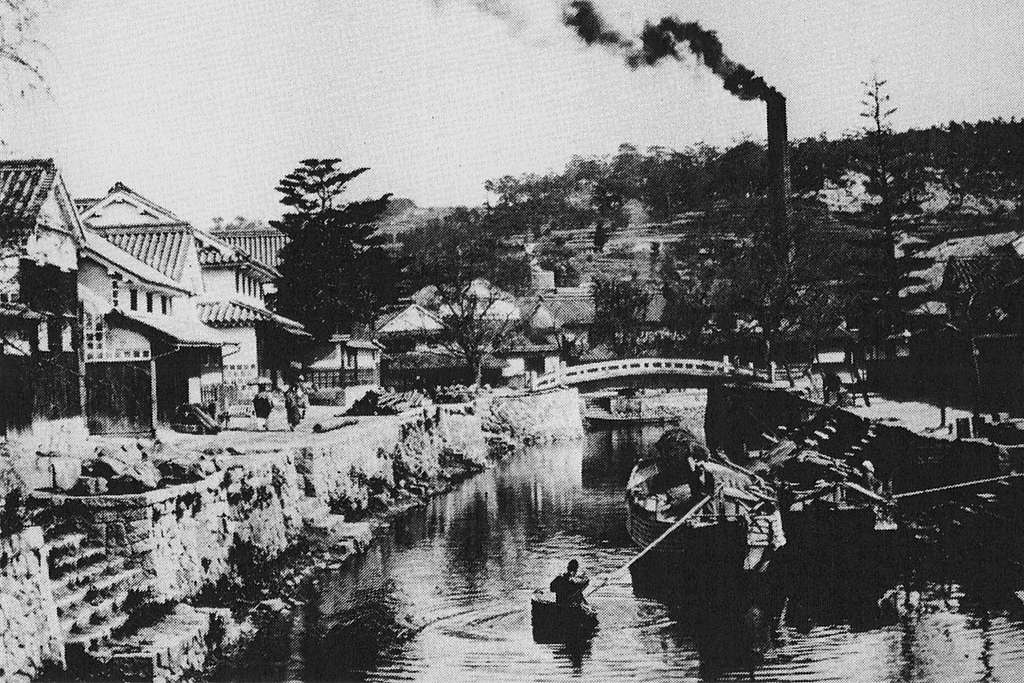
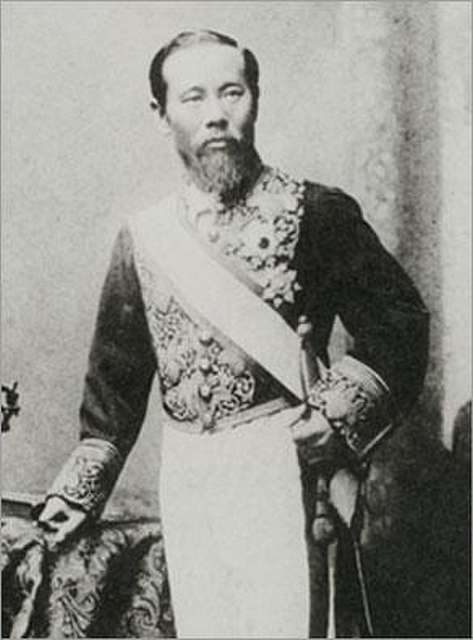
The newspaper was financed by Prince Ito Hirobumi (1841-1909), a four-time Prime Minister of Japan, so the newspaper was not entirely free from the influence of the Japanese government, but the aim of the newspaper was to be independent. Mr. Zumoto had claimed in speeches around the world that Japan’s press enjoyed almost as much political freedom as does the press of Britain or America. From 1931 onward the Japanese government mounted more pressure on the paper’s editors to submit to its policies. In 1933, a former Japanese Foreign Ministry official was appointed as chief editor. During World War II, the newspaper served as an outlet for Imperial Japanese government propaganda and editorial opinion. Since 1996, the newspaper has been fully private and is not associated with any other mainline Japanese language publications.
Intercultural Perspective: Japan’s Window to the World
The Japan Times has offered a unique point-of-view, different from other Japanese language newspapers, since its first issue. This is a rare resource of media during the Meiji and Taishō eras, available in English. Having pioneered overseas-focused journalism, The Japan Times focused on how to report Japanese issues to a non-Japanese audience. This perspective, where the focus is on intercultural understanding, offers valuable insights for research in both history and culture.
With the mottos, “All the News without Fear or Favor” and “The World’s Window on Japan,” The Japan Times newspaper is an independent publication, not associated with the mainline Japanese language publications. As the only English-language Japanese newspaper archive of this depth, The Japan Times Digital Archive delivers over a century of news and history on world affairs from a Japanese perspective.
Content Includes:
- News, Opinions (Editorials, Op-eds, Letters to the Editor)
- Features – Life and Style, community, media, technology, food and drink, travel, environment, education, cartoons
- Entertainment – Film, art, music, stage, books, event previews, festival listing
- Sports – Domestic and overseas, including coverage of baseball, soccer, basketball, sumo and figure skating
- Advertisements from the very first issue in 1897.
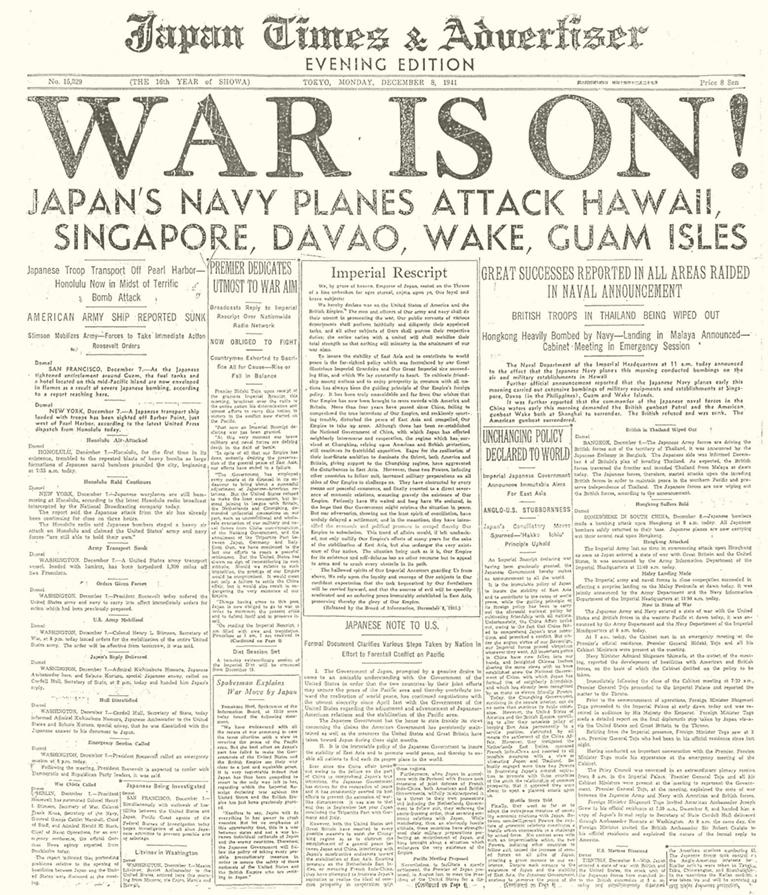
Articles found in The Japan Times often included information that was not published in the Japanese-language press. Some articles influenced not only the Japanese government, but also foreign entities:
- In 1914, The Japan Times first reported on the Siemens Scandal. The collusion of the Imperial Japanese Navy led to the fall of the cabinet of Yamamoto.
- In 1924, there were special features on the U.S.-Japan friendship. A special volume called “Message from Japan to America” was published. “A Message from Americans in Japan” was also published later that year.
- In 1934, the Society Page carried an interview with a German journalist named Richard Sorge. This was a full seven years before he made headlines having been exposed as a Soviet spy.
- In 1945, the editorial revealed Japanese citizens’ mixed feelings toward the Supreme Commander for the Allied Powers occupation. The Japan Times featured an editorial called “What shall we think of the Americans?”
- In 1955, a young woman’s victory in a small tennis tournament was reported, which was about four years before she became the new Crown Princess of Japan.
Digital Archive’s Key Features:
The Japan Times Digital Archive features the most innovative and user-friendly interface for discovering deep archive of any Japanese newspaper (English or Japanese). Researchers now have online access to nearly 500,000 pages of a searchable English-language trove of over a century of Japanese history. Users can now search and view all the valuable resources The Japan Times has been delivering to the world, including thousands of detailed articles about Japan and East Asia, since its inception.
- Every issue, published from March 1897 is searchable
- View graphic images, photos, and illustrations
- Text within advertisements is searchable
- Download or print articles in high resolution
- Includes special supplements of particular and unique interest to researchers, going back to the 1890’s, including “EU Special”, “Global 30 Universities”, “Davos Special” and more.
As the only English-language Japanese newspaper archive of this depth, no prior knowledge of Japanese is necessary to use the database. The online search tools allow users to enter keywords to find articles or advertisements on specific topics, with the option to limit searches to publication dates, title, specific days of the week, type of publication (Main, Extra, or Supplement) or by Imperial Period:
- Meiji ([1868-1913] 1897-1912)
- Taishō (1912-1926)
- Shōwa (1926-1989)
- Heisei (1989-2019)
Digital Archive’s Key Features:
The Japan Times Digital Archive features the most innovative and user-friendly interface for discovering deep archive of any Japanese newspaper (English or Japanese). Researchers now have online access to nearly 500,000 pages of a searchable English-language trove of over a century of Japanese history. Users can now search and view all the valuable resources The Japan Times has been delivering to the world, including thousands of detailed articles about Japan and East Asia, since its inception.
- Every issue, published from March 1897 is searchable
- View graphic images, photos, and illustrations
- Text within advertisements is searchable
- Download or print articles in high resolution
- Includes special supplements of particular and unique interest to researchers, going back to the 1890’s, including “EU Special”, “Global 30 Universities”, “Davos Special” and more.
As the only English-language Japanese newspaper archive of this depth, no prior knowledge of Japanese is necessary to use the database. The online search tools allow users to enter keywords to find articles or advertisements on specific topics, with the option to limit searches to publication dates, title, specific days of the week, type of publication (Main, Extra, or Supplement) or by Imperial Period:
- Meiji ([1868-1913] 1897-1912)
- Taishō (1912-1926)
- Shōwa (1926-1989)
- Heisei (1989-2019)
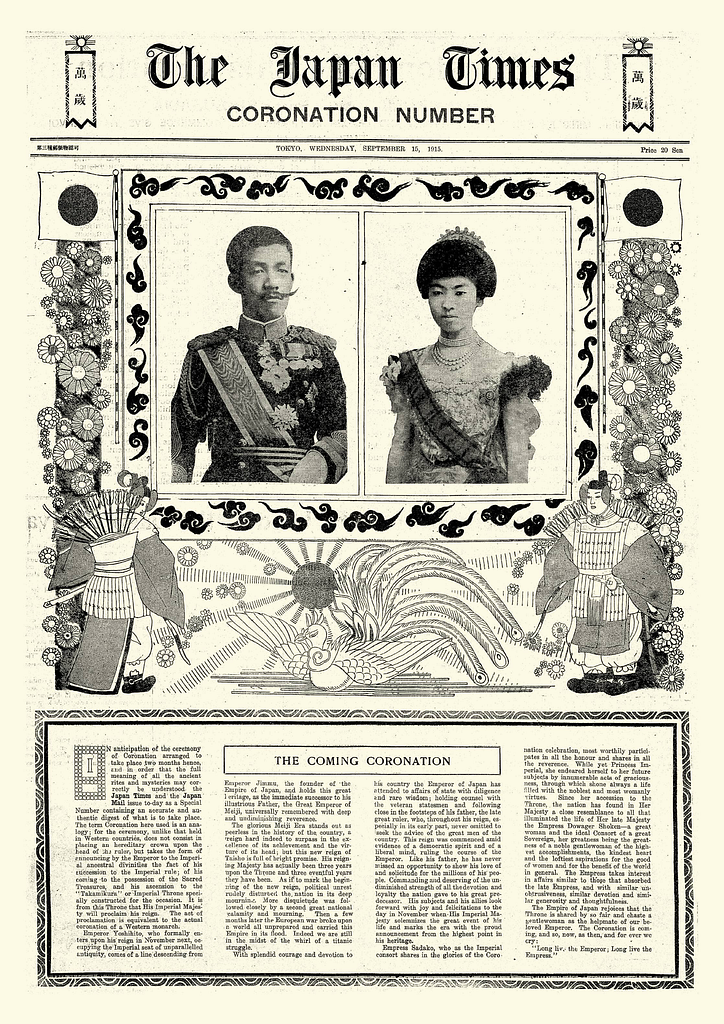
2. The Japan Advertiser Digital Archive (1913-1940)
The top English newspaper in Far East, early 20th century
Once hailed as “the Far East’s premier English language newspaper,” The Japan Advertiser was a hub of news written by and for missionaries, diplomats, merchants and journalists who were based in Japan in the early half of the 20th century. In Japan, reading English-language papers offered an interesting experience since the reporting and treatment of events was often quite different from Japanese-language papers.
Many of The Japan Advertiser’s reporters also worked as correspondents for American and British newspapers and wire services, including The London Times, The New York Times, and AP, enabling them to draw upon the experience and networks of contacts they had built up covering stories in the West, China, and other parts of East Asia. With content ranging from information aimed at American and European residents to global news, The Japan Advertiser included columns focused on US and British news, as well as articles written by Japanese government officials, military officers, well-known individuals, and letters from readers.
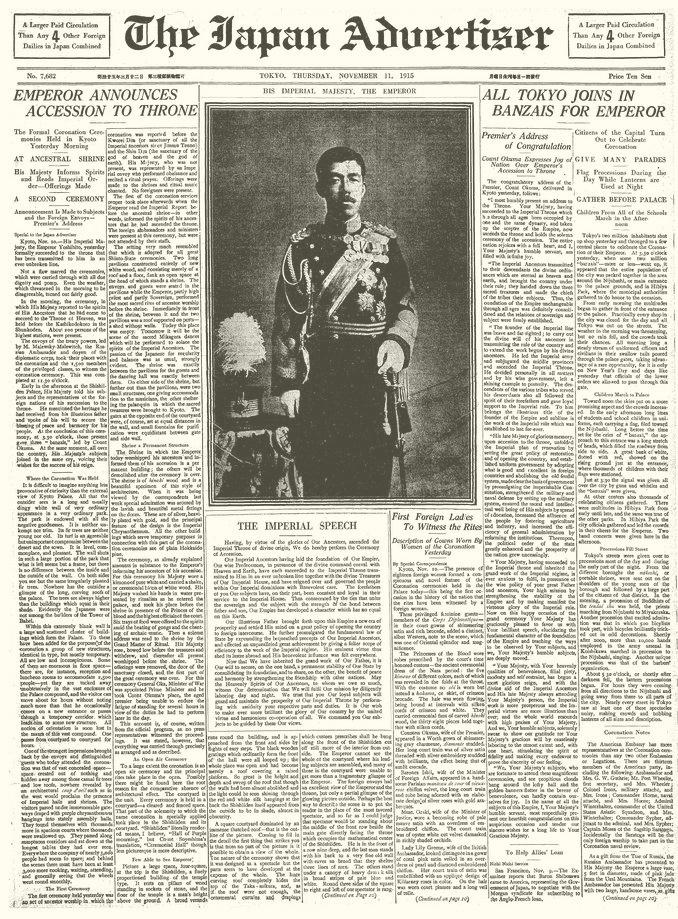
At a time when information is increasingly globalized, many historians will find benefit researching how information was gathered and disseminated before World War II from a global viewpoint. The Japan Advertiser is a helpful reference for various fields of study such as Media History, Journalism, International Relations History, East Asian Studies, Political/Economic History, Comparative Cultural Studies, and Japanese Studies.
3. Japan Times Digital Archive: 1865-1866 Meiji Restoration
The Social Change in Late Edo Period Japan

The Japan Times of the 1860s, published weekly in Yokohama from September 1865-June 1866, is available on The Japan Times digital archive platform as a separate purchase. Published during the turbulent years of the end of the Edo Period and the birth of the Meiji government, this separate newspaper preceded the launch of today’s The Japan Times and is a valuable resource for showing Japanese society through the eyes of foreigners during these changing times. Founded by a British publisher, The Japan Times of the 1860s contains contributions from Ernest Satow, a British diplomat who is said to have deeply influenced Japanese history, and other valuable information regarding the Meiji Restoration. The Japan Times of the 1860s collection contains information on foreign incoming/outgoing ships, domestic and foreign news, court trial coverage, commercial ads, and foreign embassies in Japan.
4. The Japan Times Weekly Digital Archive (1938~1941)
Chronicle of Japan’s Domestic and International Affairs at WWII Outbreak
An English-language weekly magazine formed by the merger of The Japan Times Weekly and Trans-Pacific, commonly referred to as The Japan Times Weekly. This 50-page publication covered Japan’s international and domestic affairs during the outbreak of World War II. Articles were written by both Japanese and non-Japanese journalists, showcasing their insights into Japan’s English-speaking readership and the editorial team’s desired image of Japan for an international audience. The magazine reported extensively on topics such as one-party reforms, the invasion of China, and the Tripartite Pact with Germany and Italy. Each issue also featured reviews on art and culture, Japanese language learning guides, and translations of key articles from major Japanese newspapers.
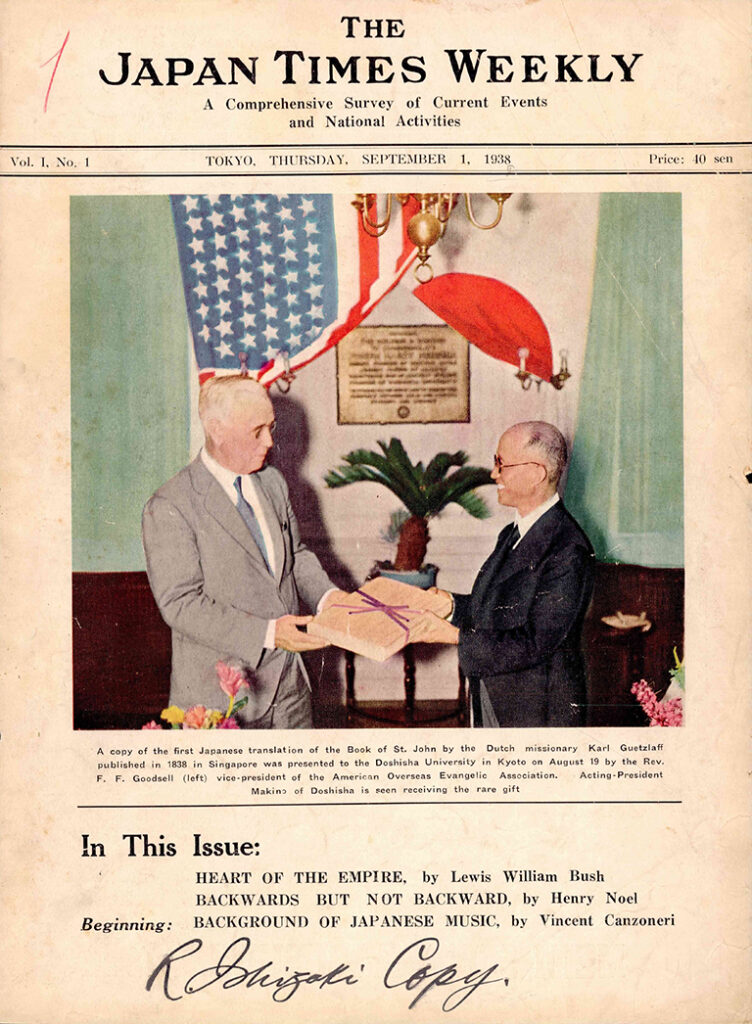
5. Japan Illustrated Digital Archive (1963~1977)
Visualizing Key Resources on Japanese Society in 1960s–70s
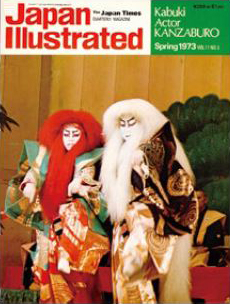
Japan Illustrated was published quarterly by The Japan Times between 1963 and 1977, at a time when the Japanese postwar economic miracle was in full flight. The magazine devoted entire issues to the major events of the era, including the 1964 Tokyo Olympics, the 1970 Osaka Expo and the 1972 Winter Olympics in Sapporo. It introduced readers, in quality color and black and white photography, to various parts of Japan. It also provided snapshots and profiles of Japanese firms that were making world-class automotive and electronic products. The Japan Illustrated archive is a valuable contribution to the world’s understanding of Japanese society in the 1960s and 1970s. This product is a photographic introduction on Japanese culture, fine arts and crafts, performing art, architecture, cultural heritage, nature, industry, major events and more. Focusing on people who are active in various fields.
